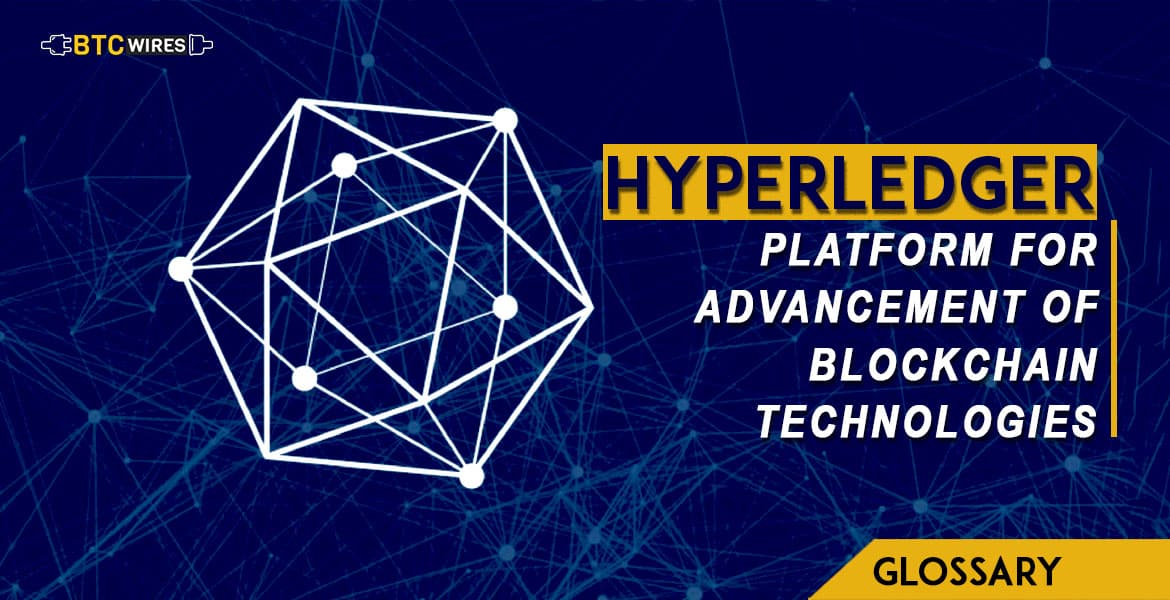For those that do not have a proper understanding of

For those that do not have a proper understanding of Hyperledger, or those who are trying to understand the concept behind it, Hyperledger is not a company or a cryptocurrency. It is rather something of a hub for open industrial blockchain development. The definition of Hyperledger on its official website goes likes:
“Hyperledger is an open source collaborative effort created to advance cross-industry blockchain technologies. It is a global collaboration, hosted by The Linux Foundation, including leaders in finance, banking, Internet of Things, supply chains, manufacturing, and Technology.”
Hyperledger does not support Bitcoin or some other cryptocurrency. However, the platform is inspired by blockchain innovation. Not since the Web itself, the site says, “has a technology promised that is more extensive and more of a basic revolution than blockchain technology.” Blockchains can ”build a new generation of transactional applications that establish trust, accountability, and transparency at their core while streamlining business processes and legal constraints.”
With the help of Hyperledger, Linux Foundation focuses on how to create an environment in which groups of software developers and organizations can coordinate to build blockchain scheme. Hyperledger was founded in December 2015. In February 2016, Hyperledger announced its first founding member, further in March 2016, ten more members joined the platform.
Today, it has an impressive number of individuals in its list which is approximately more than 100. The list covers a wide range of well-known industry pioneers. It includes mobility tech monsters like Airbus and Daimler, IT-organizations like IBM, Fujitsu, SAP, Huawei, Nokia, Intel and Samsung, financial institutions like Deutsche Börse, American Express, J.P. Morgan, BBVA, BNP Paribas and Well Fargo, and Blockchain startups like Blockstream, Netki, Lykke, Factom, bloq and Consensys. A lot of the world’s biggest organizations in Tech and Finance meet at Hyperledger with some of the hottest blockchain startups.
Something like the executive government, Hyperledger is the committee of leaders. It consists of more than 10 administrators, most with many years of experience in Open Source and close associations with several enterprises. They have leaders from the Apache Foundation and the W3C Consortium as well as engineers from IBM and more. Some of Hyperledgers’ individuals, like Richard Brown and Tamas Blumer, had already worked on Blockchain for years. For its members, Hyperledger does not only provide technical learning and software frameworks but also various contacts to industries and developers.
Projects:
The hyperledger platform works on “umbrella strategy” which incubates and sponsors a wide range of business blockchain technologies, framework, libraries, interfaces, and application. Currently, it is hosting the following projects:
Hyperledger Sawtooth: This is a particular blockchain suite which is developed by Intel, which uses a new consensus algorithm called Proof of Elapsed Time (PoeT).
Hyperledger Iroha: Iroha is a venture of a few Japanese organizations to create a simple, easy to join, the structure for a blockchain.
Hyperledger Fabric: This project is lead by IBM. Fabric is a plug and plays implementation of blockchain innovation designed to develop high-scaling blockchain applications with a flexible degree of permissions.
Hyperledger Burrow: This venture builds up a permissible smart contract machine along the specifications of Ethereum.
Apart from these framework projects, Hyperledger aims on developing several tools projects which focuses on easier access and development of blockchains and making it more effective.
This is known as Cello, a blockchain as-a-service deployment model, Composer, a tool for building blockchain networks, an Explorer, tool to view, query and deploy transactions and associated informations on blockchains, and Indy, a collection of tools, libraries and components for digital identities rooted on blockchains.
Hyperledger, takes part in wide scope of non-fiscal blockchain projects. The two most prominent projects: Sawtooth and Fabric are made by huge companies – Intel and IBM respectively– and given to Hyperledger as open source code. With Hyperledger the organizations keep pushing their blockchain projects forward, while everybody else is invited to contribute.
Hyperledger Sawtooth:
Hyperledger Sawtooth is blockchain platform for building distributed ledger for applications and developments. The outline theory targets are keeping ledger distributed and making smart contracts safe, especially for enterprise use.
Sawtooth simplifies blockchain application development by isolating the core framework from the application domain. Application developers can indicate the business rules appropriate for their application, using the language of their choice, without the need to know the basic plan of the core framework.
Sawtooth is also highly modular. This modularity enables enterprises and consortia to settle on policy decisions that they are best equipped to make. Sawtooth’s core design enables applications to choose the transaction rules, permissioning, and consensus algorithms that help their unique business needs.
Hyperledger Fabric:
Hyperledger Fabric is a platform for distributed ledger solutions supported by modular architecture delivering high degrees of confidentiality, resiliency, flexibility, and scalability. It is designed to help pluggable implementations of various components and accommodate the complexity and intricacies that exist across the financial environment.

Hyperledger: The backbone of non-monetary, industrial blockchain technology?
While most other blockchain projects focus on cryptocurrencies and tokens, the projects around Hyperledger demonstrate a strong potential to build the backbone of non-monetary, high scaling industrial applications of blockchain technology. With interesting concepts and leaders in the technology behind, Hyperledge has not the worst chances to win this prize.
